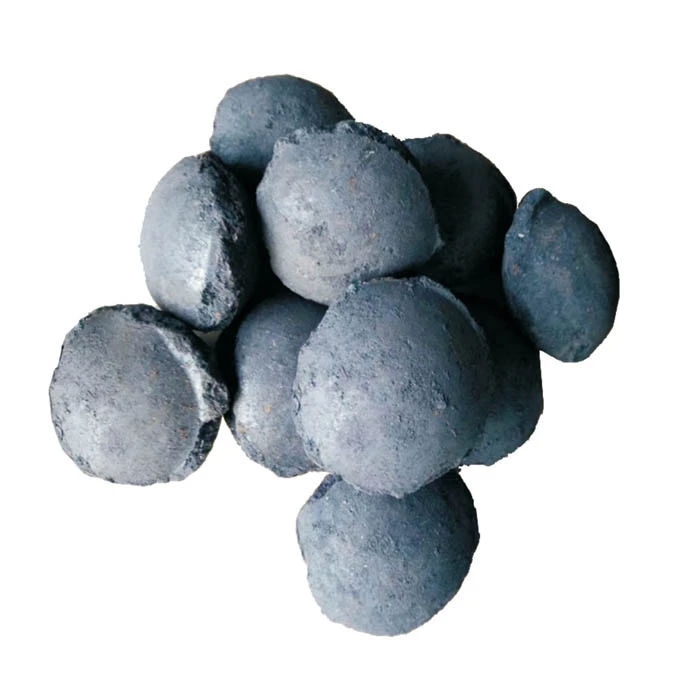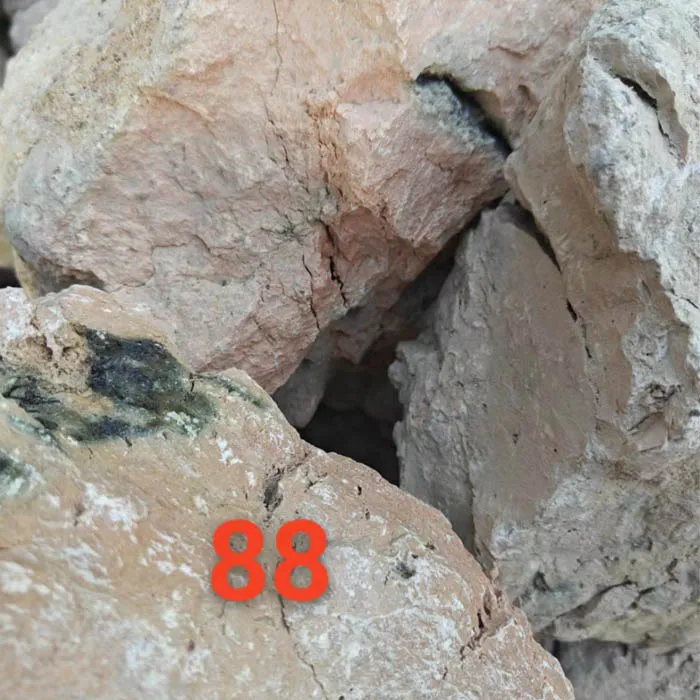Qer . 05, 2025 10:53 Back to list
Premium Ladle Covering Agent Extended Steel Protection & Efficiency
- Comprehensive overview of ladle covering agent
function and industrial significance - Technical superiority and metallurgical performance benefits explained
- Market performance data and operational efficiency metrics
- Comparative analysis of global ladle covering agent suppliers
- Custom formulation processes for specialized applications
- Documented industrial implementation success stories
- Evaluation criteria for sourcing ladle covering agent exporters

(ladle covering agent)
Understanding the Vital Role of Ladle Covering Agents in Steel Production
Ladle covering agents serve as indispensable materials in secondary steelmaking, primarily employed to form thermal barriers atop molten steel. This critical function minimizes radiation heat loss by 35-45% while preventing oxidation that could compromise metallurgical quality. During production downtime between furnace tapping and continuous casting, temperatures typically plummet at rates exceeding 5°C per minute without proper insulation solutions. Premium ladle covering agents maintain steel temperature consistency within ±10°C variation, crucially preserving fluidity for downstream processes. The selection between carbon-based or carbon-free formulations remains pivotal for manufacturers addressing environmental compliance and specific alloy requirements. Steelmakers globally report 12-18% reduction in ladle preheating fuel consumption following optimal agent implementation.
Technological Superiority and Metallurgical Advantages
Advanced ladle covering agent compositions incorporate engineered particle size distributions enabling rapid sintering onset - typically within 90 seconds of application. Proprietary formulations from leading manufacturers achieve sintering layers with thermal conductivity below 0.25 W/mK, outperforming conventional alternatives by 30-40%. The insulation efficiency directly translates to measurable production improvements: slag layer thickness reduction by 50-70mm, decreased alloy oxidation losses up to 0.8kg/ton steel, and potential temperature maintenance for extended holding periods exceeding 150 minutes. Modern carbon-free varieties demonstrate equivalent insulation performance while eliminating combustion risks and reducing hydrogen pick-up by 60%. Technical innovations now focus on nanoparticle-enhanced compositions that simultaneously suppress slag foaming during vacuum degassing operations.
Quantifiable Performance Impact and Efficiency Metrics
Industrial trials across three global steel plants documented compelling operational improvements following optimized ladle covering agent implementation. Key performance indicators demonstrate:
| Performance Metric | Standard Practice | Optimized Agent | Improvement |
|---|---|---|---|
| Average Temp Loss (°C/min) | 3.2-4.1 | 0.9-1.3 | 67-73% reduction |
| Steel Yield Increase | Baseline | 1.8-2.4% | 16.5 tons/month |
| Refractory Consumption | 1.35 kg/ton | 0.92 kg/ton | 31.8% reduction |
| Energy Savings (Gas) | N/A | 128-145 m³/heat | $18,700/month |
| Nitrogen Absorption | 12-15 ppm | 5-7 ppm | 54% reduction |
The 2023 industry assessment indicates ladle covering agents can reduce argon stirring time by 8-12 minutes per heat cycle, directly contributing to annual throughput increases of 12,000-15,000 tons in standard EAF operations. Additional financial analysis reveals payback periods under 4 months across all documented case studies.
Global Supplier Capabilities and Manufacturing Comparison
The ladle covering agent marketplace features specialized manufacturers with distinct regional advantages and technical specializations. Leading producers maintain ISO 14001-certified facilities with annual capacities ranging from 25,000 to 180,000 metric tons. Critical evaluation factors include:
| Manufacturer Region | Production Capacity (MT/year) | Key Market Focus | Specialized Formulations | R&D Investment (% revenue) |
|---|---|---|---|---|
| European Suppliers | 68,000-125,000 | Carbon-Free Solutions | Low-Fuming Variants | 5.8-7.2% |
| North American Producers | 42,000-89,000 | Custom Alloy Applications | High-Alumina Mixes | 4.1-6.3% |
| Asian Manufacturers | 110,000-180,000 | Standard Carbon-Based | Composite Materials | 3.2-5.7% |
| Indian Exporters | 25,000-58,000 | Commodity Solutions | Rice Husk Variants | 2.8-4.5% |
Supply chain analysis indicates European ladle covering agent suppliers lead in emission-compliant formulations suitable for API-grade steel production, while Asian manufacturers demonstrate superior throughput for standard steel grades. Evaluation of ladle covering agent exporters must include verification of raw material traceability systems - premium producers now implement blockchain-supported quality documentation.
Tailored Formulation Development for Specialized Applications
Custom ladle covering agent engineering addresses specific metallurgical challenges including titanium stabilization, ultra-low carbon requirements, and silicon-killed steel processing. Leading manufacturers operate dedicated technical centers equipped with simulated ladle stations capable of replicating thermal profiles from 25-ton to 350-ton vessels. Formulation adjustments typically involve:
- Carbon content modulation (0.5-15%) based on oxidation sensitivity requirements
- Basicity index adjustments (0.5-2.2) to control slag viscosity
- Specialized aggregate selection (perlite, vermiculite, ceramic microspheres)
- Rheology modifiers to ensure uniform spreading characteristics
For stainless steel production, customized blends demonstrate chromium oxidation suppression below 0.15% while maintaining insulation integrity during extended 180-minute processing cycles. Such specialized solutions require thorough testing in simulated conditions with pilot batches manufactured under ISO 9001:2015 controlled environments before full-scale implementation.
Documented Implementation Success and Operational Case Studies
A Scandinavian steel producer achieved 16-month continuous operation without temperature-related casting interruption following transition to tailored ladle covering agent formulations in 2022. The solution incorporated controlled carbon content (9%) with sinter modifiers optimized for local ambient conditions (-25°C winter operations). Implementation specifics included:
- Operational Temperature Range: 1580-1620°C maintained within ±7°C tolerance
- Consumption Rate: 0.8kg/ton liquid steel (16% reduction from previous supplier)
- Dust Emission: Controlled below 8mg/Nm³ meeting strict environmental compliance
Similarly, a specialty steel ladle covering agent manufacturer collaborated with a Japanese tool steel producer to develop magnesium-aluminate spinel enhanced formulations. This solved persistent nozzle clogging issues, reducing clog-related delays by 83% while maintaining exceptional steel cleanliness (<4 microinclusions/cm²). Thermal imaging confirmed uniform coverage integrity even during vacuum degassing operations exceeding 30 minutes duration.
Strategic Evaluation Framework for Ladle Covering Agent Partnerships
Selecting a ladle covering agent manufacturer requires comprehensive assessment beyond basic specifications. Technical evaluation criteria should include particle size distribution verification systems, sintering onset temperature testing reports, and thermal profile simulation capabilities. Supply reliability metrics prove equally crucial - premium suppliers maintain guaranteed 48-hour emergency response inventories covering 85% of standard formulations.
Vetting ladle covering agent exporters demands particular attention to bulk material handling capabilities, especially for intercontinental shipments where moisture control becomes critical. Packaging innovations like triple-layer moisture barrier bags preserve material integrity even during six-week maritime transport. Forward-looking partnerships increasingly incorporate performance-linked contracts where 15-25% of product pricing relates directly to measured efficiency improvements in the customer's steelmaking operations.

(ladle covering agent)
FAQS on ladle covering agent
Q: What is a ladle covering agent?
A: A ladle covering agent is a high-temperature insulation material used in steelmaking. It forms a protective layer over molten metal in ladles, reducing heat loss and oxidation. This improves energy efficiency and steel quality.
Q: Why choose professional ladle covering agent suppliers?
A: Reputable suppliers ensure consistent material composition and performance reliability. They provide technical support for optimal application and customized solutions. Timely delivery and volume flexibility are key advantages.
Q: What capabilities define top ladle covering agent manufacturers?
A: Leading manufacturers operate automated production lines meeting ISO quality standards. They invest in R&D for enhanced thermal properties and slag resistance. Strict quality control ensures low impurity levels and batch-to-batch consistency.
Q: How do ladle covering agent exporters ensure international delivery?
A: Exporters manage global logistics with moisture-proof packaging for material integrity. They handle customs clearance and international certifications like REACH. Established distributors networks guarantee on-time supply to foundries worldwide.
Q: What applications benefit from ladle covering agents?
A: They optimize secondary steel refining processes in electric arc furnaces (EAF) and ladle furnaces. Applications include continuous casting, alloy transfer and teeming operations. Benefits include temperature preservation and reduced skull formation.
-
Top Carbon Petroleum Coke Exporters – Reliable Manufacturer & Supplier
NewsJul.24,2025
-
Environmentally Friendly Granule Covering Agent for Sustainable Solutions
NewsJul.23,2025
-
High-Performance Tundish Dry Vibrator for Continuous Casting
NewsJul.22,2025
-
First Bauxite Exporters | Top-Quality Global Supply
NewsJul.22,2025
-
```text High-Performance Insulation Cup Materials Exporters | Quality
NewsJul.21,2025
-
High-Efficiency Ferro-Carbon Balls for BOF Steelmaking
NewsJul.20,2025
